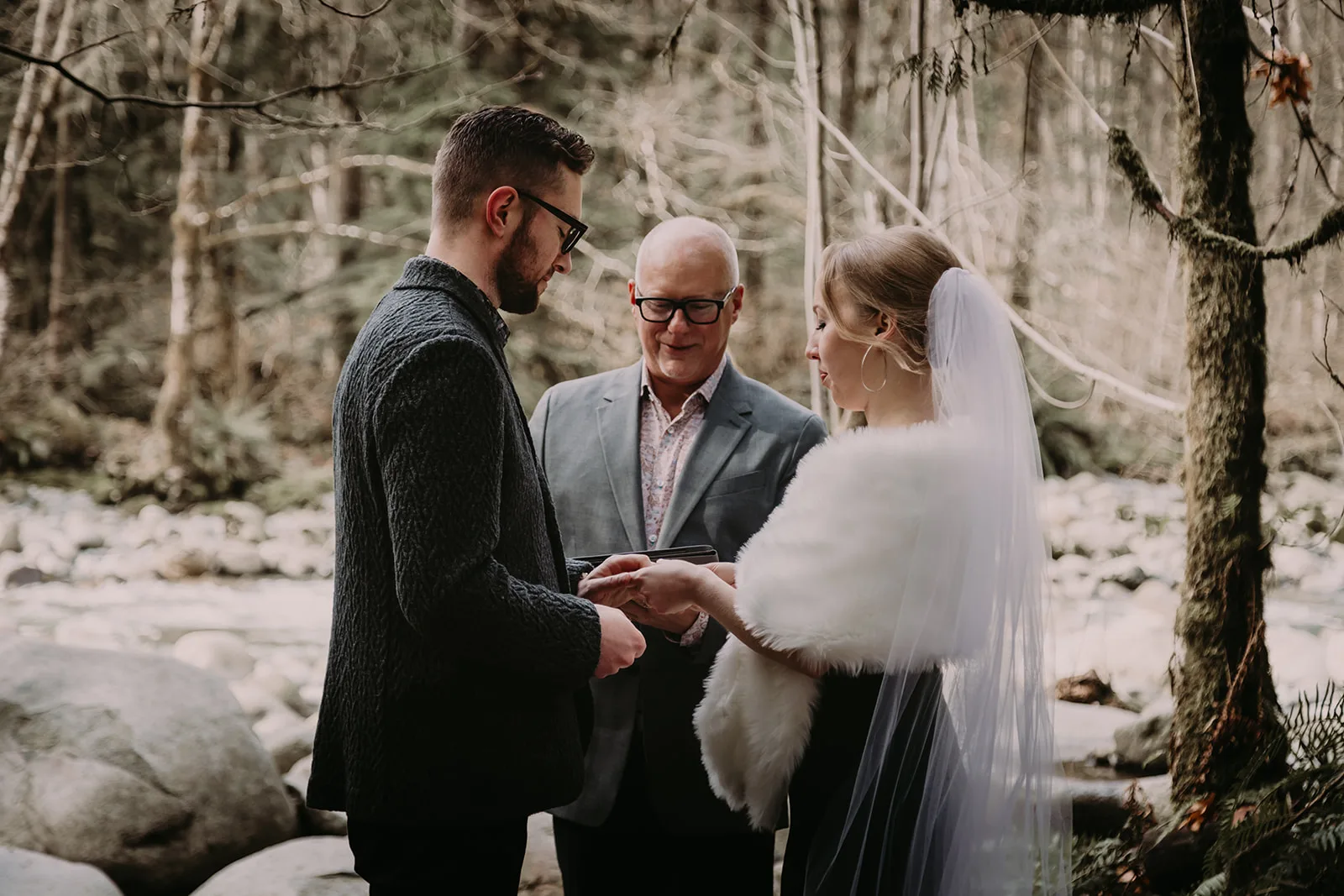Places, everyone! The wedding ceremony is about to start. But where does everyone stand during a wedding ceremony? Is everyone even standing or should some people be sitting? What about the wedding party, readers and the officiant?
Below we’re breaking down all of the blocking and placement that you need to know before your wedding ceremony to make sure everyone is where they’re supposed to be on the big day. Ready? Let’s hit the mark!
Where does the couple stand during a wedding ceremony?
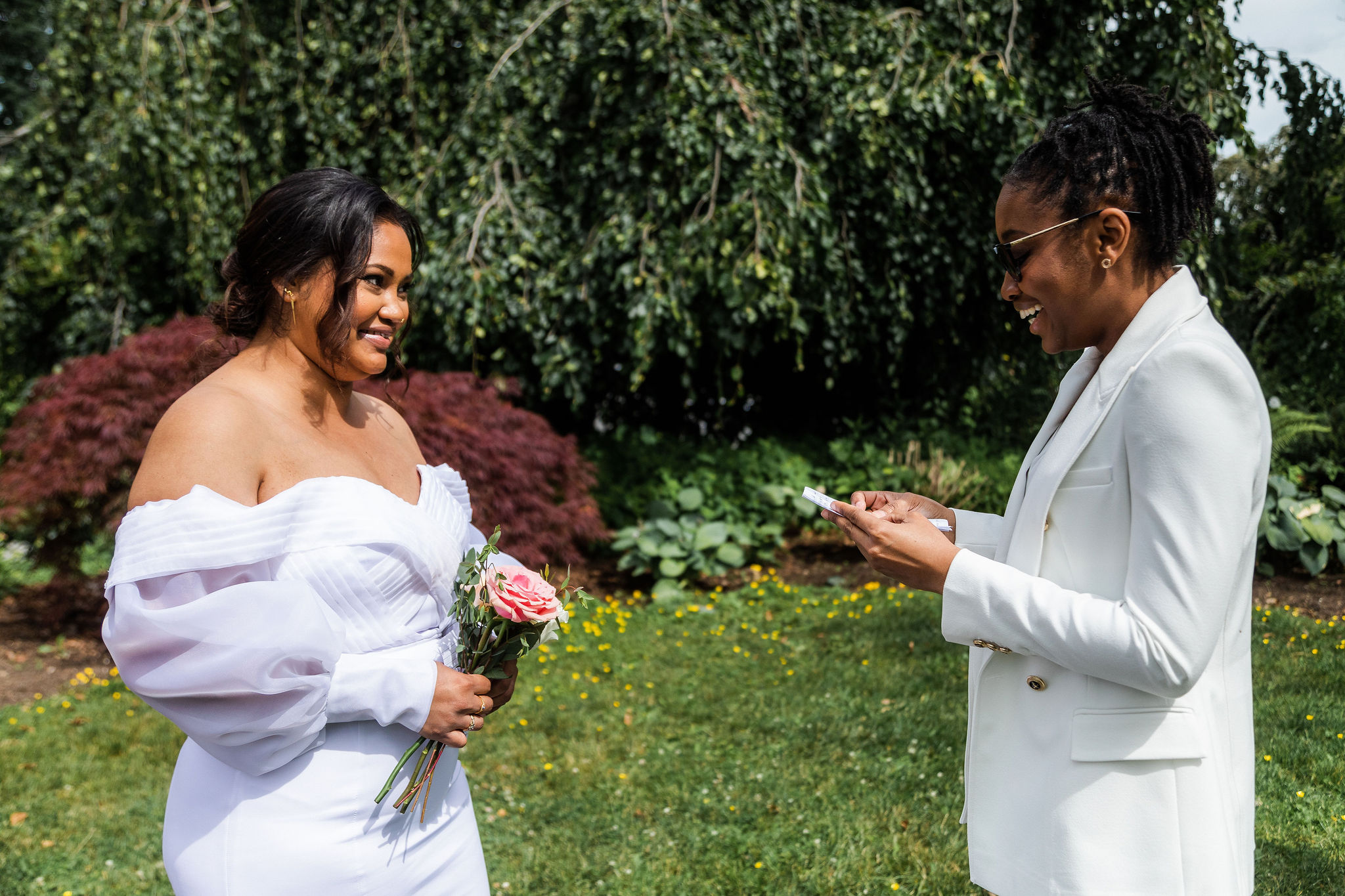
After the processional, the couple getting married usually stands at the front of the aisle, facing one another, centred to their guests. In some religions and cultures, the couple will face forwards instead of facing each other, and they may sit for parts or all of the ceremony.
However, if this isn’t a practice in your religion/culture, we recommend facing each other instead of facing forward. That way, you get to see each other and have an emotional connection throughout the ceremony. You also let your guests see at least half of your face – which is better than them staring at your back the whole time!
What side does the bride stand on?
Traditionally the bride stands on the left while the groom stands on the right. But not all weddings have brides or grooms, so we say you should stand wherever the heck you want!
Where does the officiant stand during a wedding ceremony?
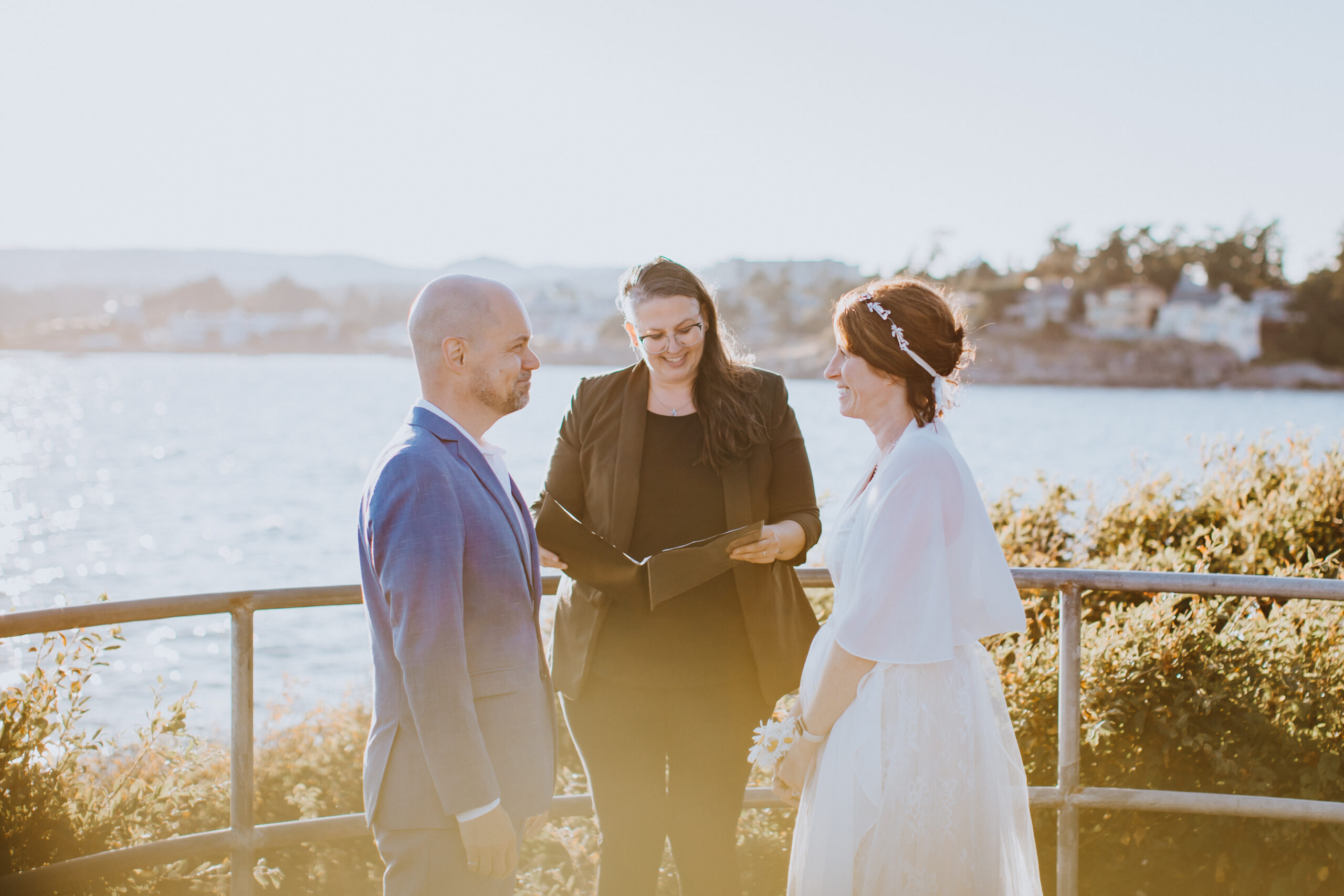
Traditionally the officiant stands behind the couple, centred between them, facing the guests. In this position they’re able to both address the audience as they lead the ceremony while also assisting the couple through different parts, such as their ring exchange.
And a good officiant (like the ones you’ll find here at Young Hip & Married!) will know to move aside for all of the important moments, like your vows and first kiss. That way, you can have an intimate moment just with your partner and you won’t have your officiant in the background of all of your photos.
You may have seen a new trend where officiants stand in the aisle during the ceremony but… we actually don’t think this is the best idea. Since your officiant is mostly speaking to your guests throughout your ceremony, guests won’t know whether to look ahead at you or behind to your officiant.
And while the trend is meant to make things easier for your photographer to capture photos of just you two, it can actually be harder for your photographer and videographer to move around with your officiant in the aisle.
Where does the wedding party stand during a wedding ceremony?
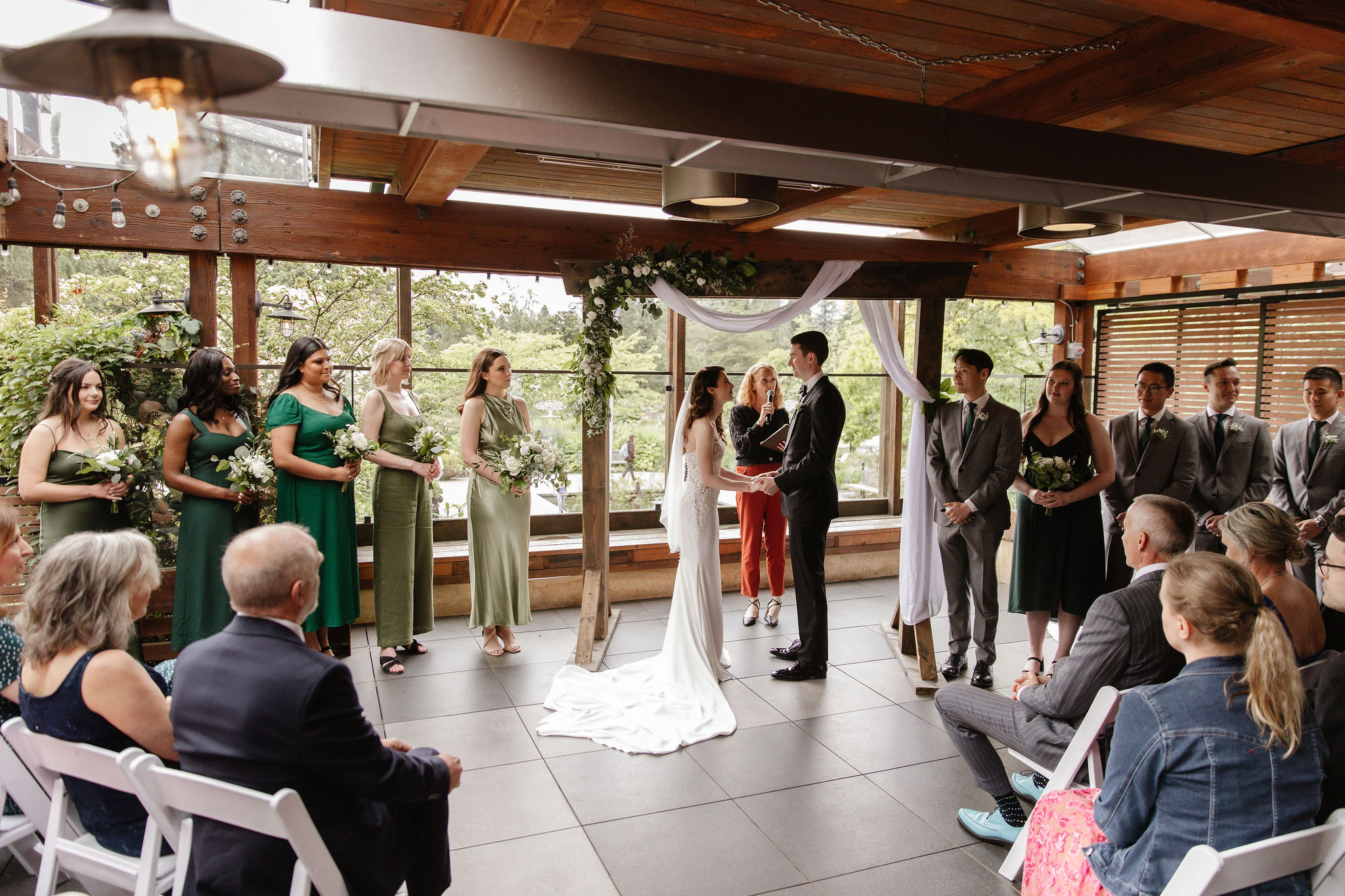
Usually after processing down the aisle, the wedding party will stand on either side of the couple in a long line. Attendants for Partner A will stand behind them and attendants for Partner B will stand behind them.
And while this is the traditional format we see at most weddings, it’s not mandatory. You can choose to have your wedding party process down the aisle and then sit in the front row instead of standing with you at the front or you can get married without a wedding party at all. It’s up to you how you want your party to sit or stand during your ceremony.
Should guests be standing during a wedding ceremony or sitting?
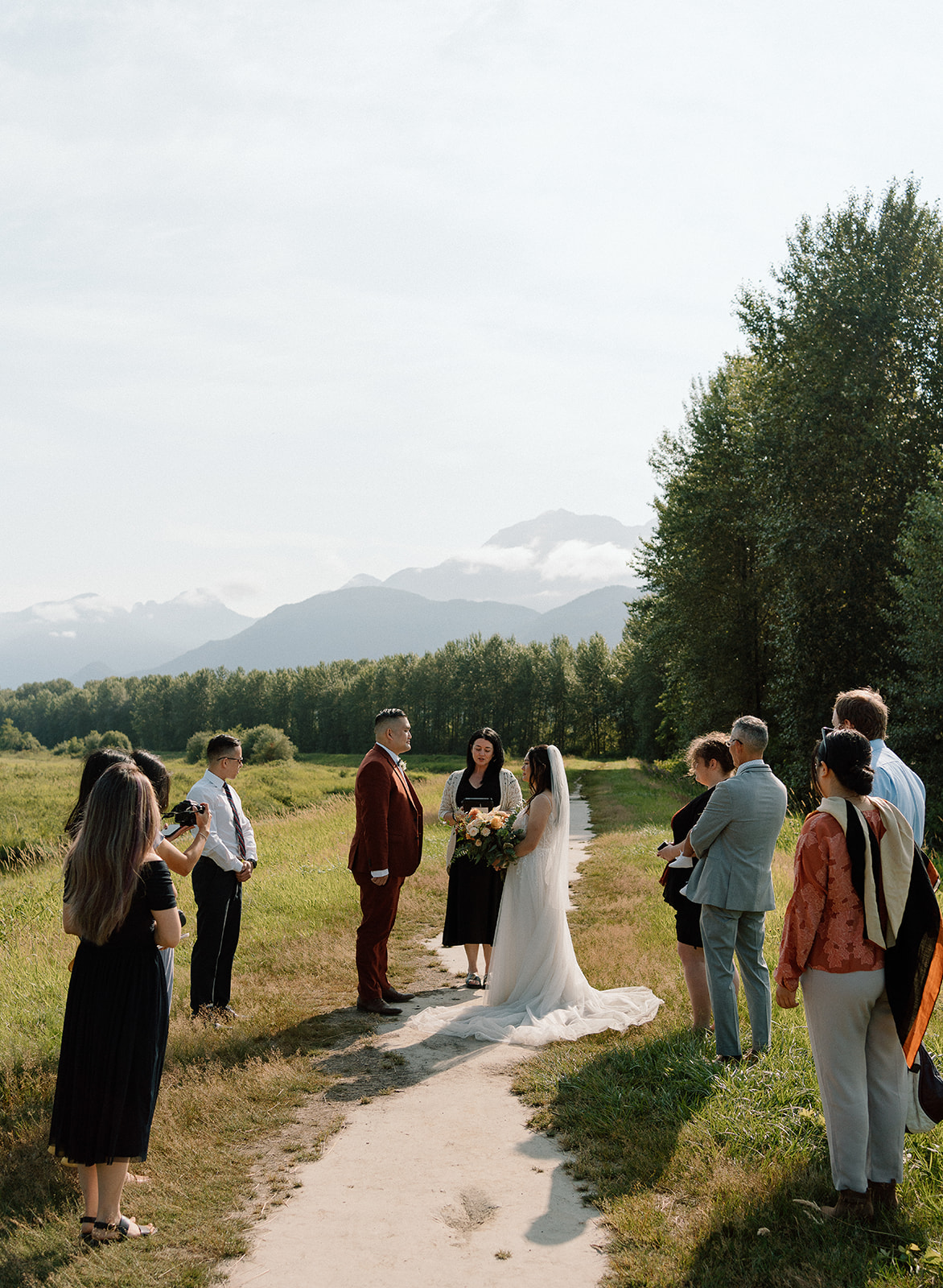
Guests standing during a wedding ceremony is less common than having them sit. Standing is best for elopements with a small guest list and a short ceremony. That way, everyone standing can still see what’s happening and won’t have to stand for too long. For ceremonies longer than 5-10 minutes and with more than 20 guests, you’ll want to provide seating. Note that you may also need to provide seating for a shorter and smaller ceremony if your guests aren’t able to comfortably stand.
Where do guests sit during a wedding ceremony?
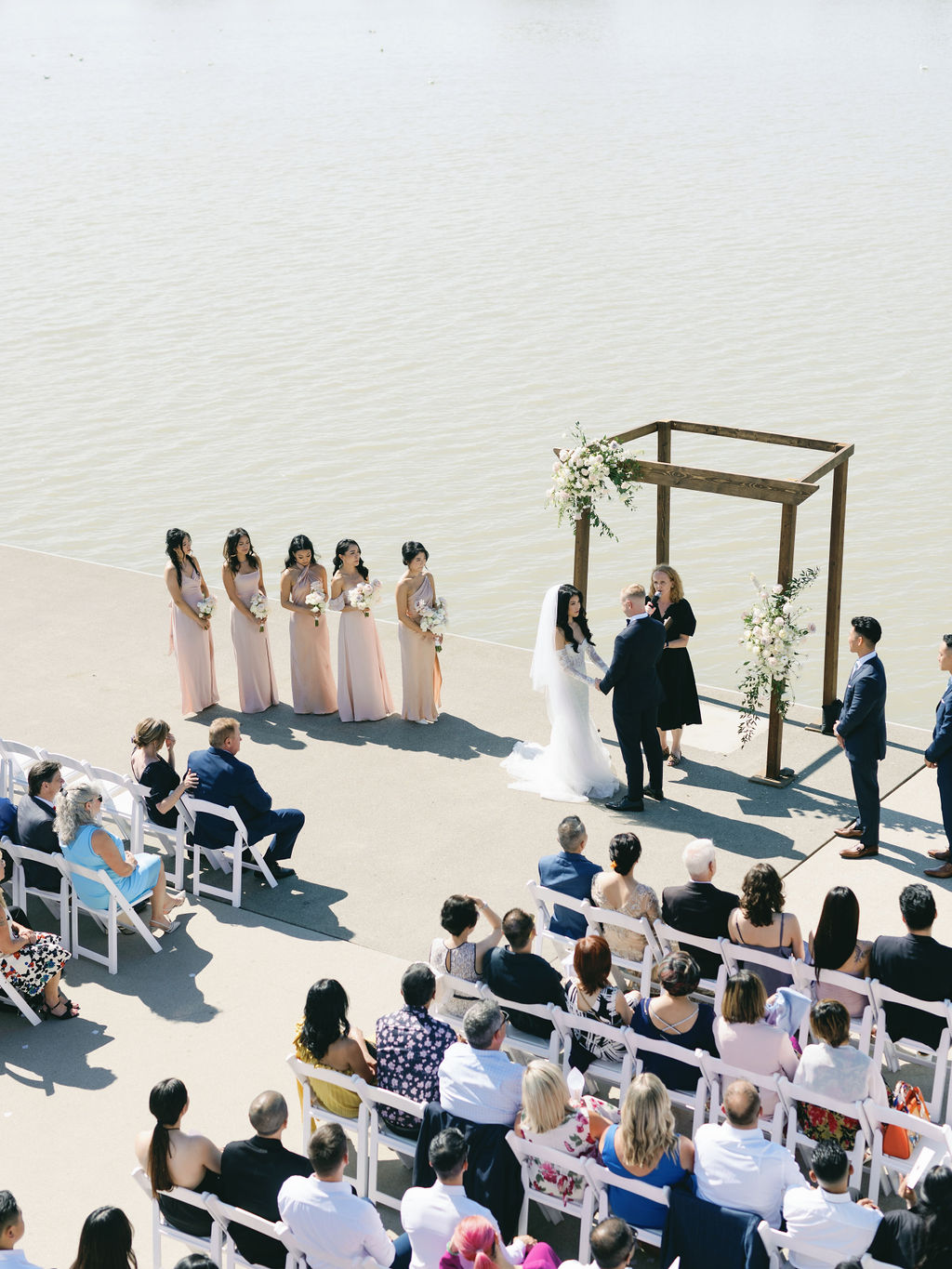
Traditionally, guests sit in rows on both sides of the aisle facing the couple and the officiant. Often these are chairs laid out in rows or benches/pews that you would see in a religious institution. It used to be that Partner A’s family and friends would sit on one side of the aisle while Partner B’s would sit on the other, but that’s just a wedding ceremony myth in modern weddings!
If you want to get creative, you could try a different seating arrangement. These creative ideas often work best with smaller guest counts, as they can be hard to execute with hundreds of people. Instead of chairs you could have sofas, hay bales with blankets, or small bistro tables set up around your space. And instead of sitting in rows, you could have guests seated in a circle around you. While we love the idea of your guests literally encircling you with their love, keep in mind that some guests will be staring at your backside the whole time!
What about parents of the couple, readers, honoured guests, etc.?
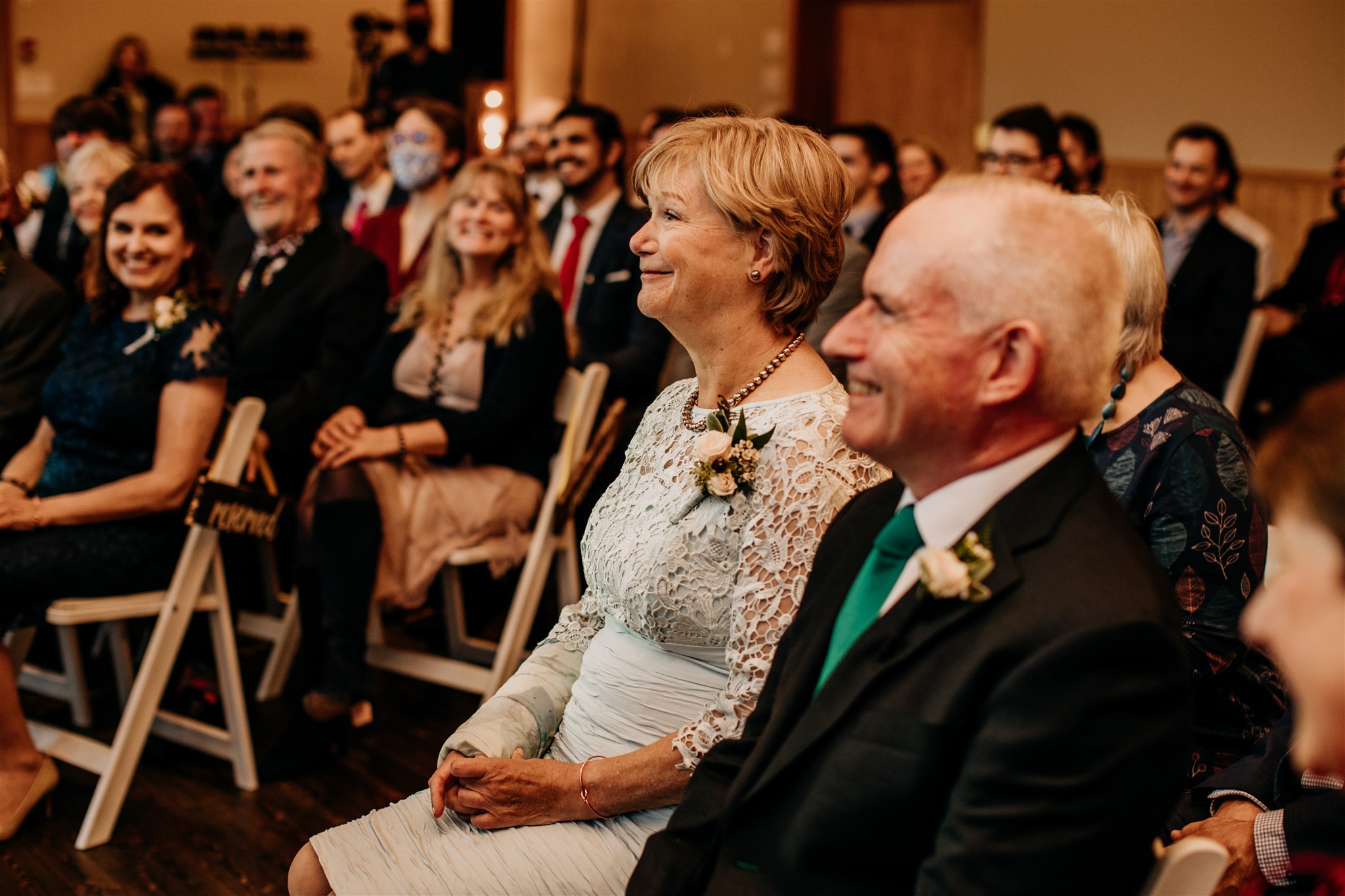
Anyone who is not getting married, officiating the wedding or in the wedding party is usually seated (or standing) with the guests. However, you can still ensure special guests get the VIP treatment.
Honoured guests, like your parents or close family members/friends can be seated in the front row. You’ll want to reserve these seats with a wedding sign and let these guests know the seats have been saved for them. Some couples also like to save a seat for a special guest who has passed away and can’t attend. This can be done by placing a photo, flower or other special marker on a seat in the front row.
For anyone involved in your wedding ceremony, such as readers or people assisting with a unity ceremony, ensure that they can get from their seat to where they need to be easily. This usually means sitting on the aisle, close to the front or in the front row. Once again, you may want to reserve these seats or let these guests know where they should sit.
Now that you know where everyone is supposed to stand during a wedding ceremony, it’s time to take your ceremony planning to the next level. Check out our Custom & Creative Ceremony Package where an officiant will work with you to create a personalized ceremony that tells your love story and is true to who you two are – no unnecessary traditions required!
written by Riana Ang-Canning
feature image by Erica Miller Photography
